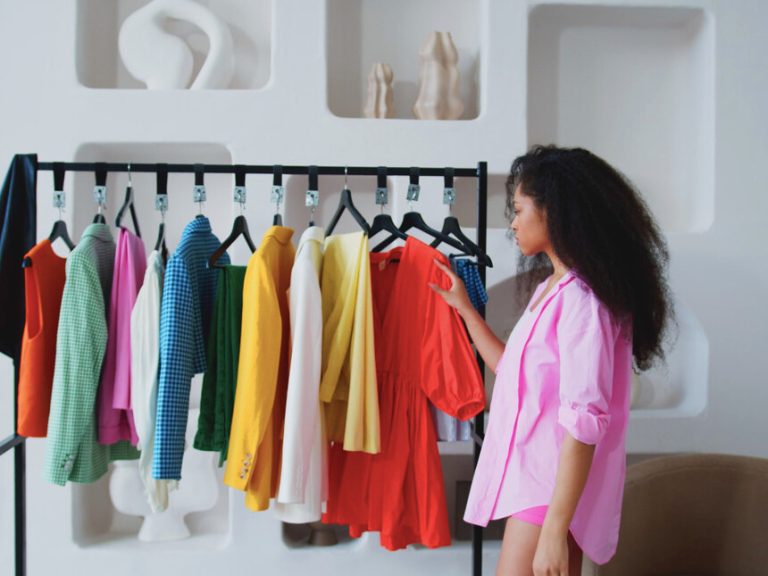The Social Media Revolution: Reshaping the Fashion Landscape
The fashion industry, once a realm of exclusive runway shows and glossy magazine spreads, has undergone a seismic shift, propelled by the meteoric rise of social media platforms. Instagram, TikTok, and Pinterest, among others, have democratized access to fashion, transforming it into a dynamic, rapidly evolving ecosystem where trends ignite and fade with unprecedented speed. This digital revolution has not only altered how fashion is consumed but also accelerated its cycle, demanding unprecedented levels of innovation and adaptability from brands striving to remain competitive in this visually driven and ephemeral market. The traditional seasonal collection model is being challenged by the immediacy of the digital world, ushering in a new era where constant renewal and instant gratification reign supreme.
The most profound impact of this transformation lies in the dissemination and perception of trends. The “see now, buy now” phenomenon exemplifies this shift, offering consumers an instantaneous shopping experience that bypasses the conventional wait for seasonal releases. A simple swipe on a smartphone allows access to entire collections, empowering consumers to instantly share their preferences and driving brands to keep pace with the accelerating rhythm of change. This rapid-fire trend cycle directly influences buying behavior, fueling a constant desire for novelty amongst consumers. Brands, in turn, are compelled to respond with agility, resulting in a fiercely competitive market that demands streamlined logistics and an unrelenting focus on innovation.
Social media has not only broadened access to fashion but has also effectively transformed it into a global, ever-updating catalogue. Influencers and content creators now play a pivotal role in shaping and disseminating trends, replacing the traditional gatekeepers of fashion magazines. Consumers no longer rely on monthly publications to stay abreast of the latest styles; they turn to social media influencers who offer daily doses of fashion inspiration, showcase accessible pieces, and champion brands that prioritize inclusivity and diversity. Influencer marketing has emerged as a potent strategy for brands to connect with their target audience, fostering authenticity and accessibility while delivering a personalized and inspiring shopping experience.
This digital landscape has also created fertile ground for the growth of independent brands. Lacking the financial clout of established fashion houses, these smaller businesses leverage social media platforms to cultivate loyal and engaged customer bases through creative and distinctive visual storytelling. Platforms like TikTok and Instagram provide the visibility necessary for these brands to stand out, showcasing their products in an authentic and often artisanal manner that resonates particularly with younger consumers who value exclusivity and unique narratives. In a sector once dominated by industry giants, the digital realm empowers emerging brands to flourish and carve their own niche.
The influence of social media on consumer behavior has undeniably accelerated the consumption cycle, fueling the growth of fast fashion. The constant bombardment of new products and daily launches creates a pervasive pressure to stay current, driving demand for affordable and readily available garments. However, this dynamic raises critical questions about the environmental sustainability of the industry. Paradoxically, the same digital platforms that promote rapid consumption also provide a platform for raising awareness about these issues. Influencers and brands are increasingly advocating for sustainable fashion practices, encouraging consumers to adopt more conscious and responsible purchasing habits.
Brand communication has also been radically reshaped by the advent of social media, becoming more direct, interactive, and often collaborative. These platforms facilitate a more accessible and intimate dialogue between brands and consumers, who become active participants in shaping the brand narrative. This continuous feedback loop allows brands to adapt their offerings to align more closely with consumer desires. Cultivating this direct connection is a crucial strategy for building brand loyalty, as consumers increasingly prioritize authenticity and gravitate towards brands that share their values and purpose. Furthermore, social media has amplified conversations around diversity, inclusion, and representation, ushering in a new era of awareness within the fashion industry. Brands are embracing narratives that were previously marginalized, celebrating diversity and creating products that cater to a wider range of bodies, genders, and cultural backgrounds. This evolution is driven by influencers and content creators who champion inclusivity and advocate for fashion as a powerful form of self-expression, making it more democratic and accessible to all. Social media, therefore, serves not merely as a showcase but as a catalyst for change, reflecting and amplifying the evolving needs and values of society while dismantling limiting stereotypes.
In conclusion, social media has revolutionized the fashion industry, making it more accessible, interconnected, and dynamic. It has also created a space where authenticity and originality can thrive. Whether a luxury conglomerate or an independent start-up, brands now have unprecedented opportunities to connect with consumers in genuine and meaningful ways, harnessing the power of social networks to inspire and be inspired. Simultaneously, these platforms serve as a reminder that fashion transcends mere trends; it is a powerful medium for self-expression and a means of connecting with what resonates with us individually. In this new digital age, the challenge for both brands and consumers lies in navigating this rapidly evolving landscape, finding their unique style and purpose, and striking a balance between the allure of staying current and the importance of mindful consumption.


